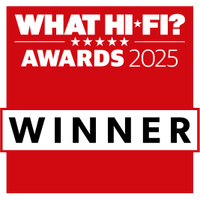What Hi-Fi? Verdict
Several little improvements combine to make the Bravia 8 II significantly better than the awesome A95L, and that makes it one of the very best TVs that money can buy
Pros
- +
Exceptionally bright, vibrant and three-dimensional picture quality
- +
Perfect blacks and excellent shadow detail
- +
Stunning and cinematically authentic right out of the box
Cons
- -
Not as outright bright as the LG G5
- -
Still just two HDMI 2.1 sockets
- -
Positioning of the feet will be awkward for some
Why you can trust What Hi-Fi?
Screen size 55 inches (also available in 65 inches)
Type QD-OLED
Backlight N/A
Resolution 4K
HDR formats HLG, HDR10, Dolby Vision
Operating system Google TV
HDMI inputs x 4 (2 x 48Gbps HDMI 2.1)
Gaming features 4K/120Hz, VRR, ALLM, Dolby Vision game mode
ARC/eARC eARC
Optical output? Yes
Dimensions (hwd, without stand) 71 x 122 x 3.4cm (33 x 57 x 1.3 inches)
The Sony Bravia 8 II is one of – if not the – most exciting new TVs of the year. Not that you would know that from the name.
The TV is exciting because it’s the successor to the A95L QD-OLED, a model so good that it’s still one of the very best TVs you can currently buy, despite being nearly two years old.
But the name is weird. ‘Bravia 8 II’ suggests it’s the successor to the Bravia 8 W-OLED TV, but the Bravia 8 is continuing in the range, with the Bravia 8 II sitting above it.
Why not call the new model the ‘Bravia 9’? Because Sony’s flagship Mini LED model already takes that name. It can’t be called ‘Bravia 10’, either, as that would suggest it sits above the Bravia 9, which isn’t the case. Besides, that name is likely being saved for the company’s upcoming RGB LED TV.
What’s in a name? Well, the worry is that the name is rather confusing and possibly undersells this new Sony QD-OLED. And it would be a real shame if potential buyers were put off by it – because the Bravia 8 II, here reviewed in 55-inch form, is an extraordinarily good TV.
Price
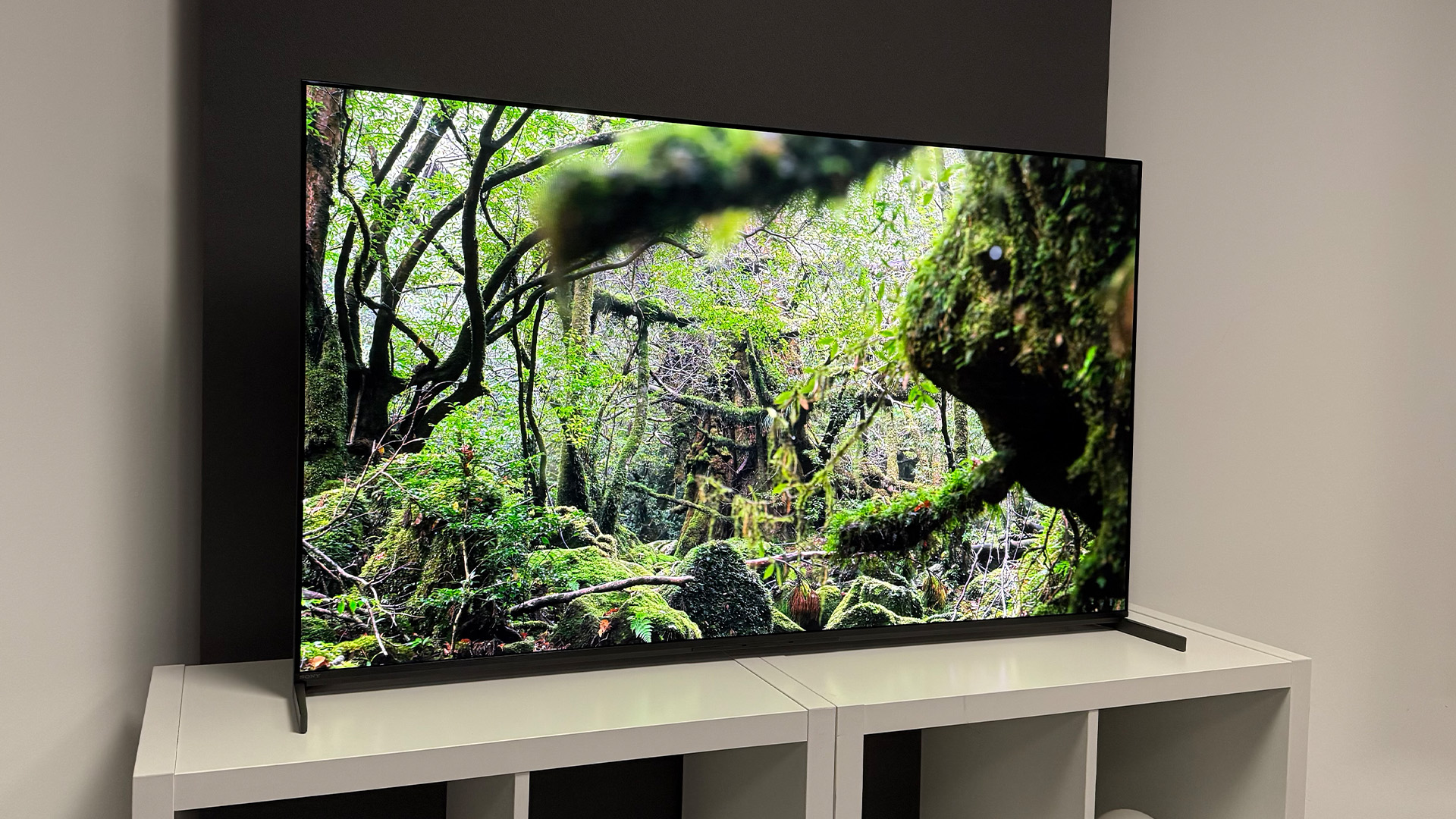
Sony promised that the Bravia 8 II would be ‘more affordable than the A95L’, by which it meant that the new model would launch for less than the outgoing model did.
That has turned out to be true for the UK and Australia, but unfortunately not for the US.
The latest hi-fi, home cinema and tech news, reviews, buying advice and deals, direct to your inbox.
Here’s a full launch price comparison between the Bravia 8, Bravia 8 II and A95L:
Size | Sony Bravia 8 | Sony Bravia 8 II | Sony A95L |
|---|---|---|---|
55 | £2199 / $2000 / AU$2995 | £2499 / $3500 / AU$3299 | £2999 / $2800 / AU$5295 |
65 | £2699 / $2800 / AU$3995 | £2999 / $4000 / AU$3999 | £3699 / $3500 / AU$5995 |
77 | £3999 / $3900 / AU$6495 | No such model | £5999 / $5000 / AU$9495 |
Thankfully, discounts have come early for the US, so while the TV is still full price in the UK and Australia, it has already dropped to $2500 and $3000 in the US for the 55- and 65-inch versions respectively.
More important than how the Bravia 8 II's pricing compares with that of its fellow Sony TVs is how it compares with rivals such as the LG G5, Samsung S95F and Panasonic Z95B.
You can see the launch pricing for all four models here:
Size | Sony Bravia 8 II | LG G5 | Samsung S95F | Panasonic Z95B |
|---|---|---|---|---|
55 | £2499 / $3500 / AU$3299 | £2400 / $2500 / AU$4199 | £2499 / $2300 / AU$3999 | £2500 / $TBC / AU$n/a |
65 | £2999 / $4000 / AU$3999 | £3300 / $3400 / AU$5299 | £3399 / $3300 / AU$4999 | £3000 / $TBC / AU$n/a |
77 | No such model | £4500 / $4500 / AU$7999 | £4499 / $4500 / AU$7999 | £4000 / $TBC / AU$n/a |
83 | No such model | £7000 / $6500 / AU$9999 | £6999 / $6500 / AU$9999 | No such model |
97 | No such model | £25,000 / $25,000 / AU$37,999 | No such model | No such model |
Of course, launch pricing is just the start of the story, and we always recommend waiting for discounts before making a purchase.
History suggests that the LG G5 will be the most heavily discounted model over time, closely followed by the Samsung S95F. Sony and Panasonic TVs, particularly flagship models, are usually less aggressively discounted.
That said, it feels as though we’re in a fairly unprecedented period of volatility, so there’s no guarantee that pricing history will repeat with these models.
Design

The Bravia 8 II looks very similar to the A95L it replaces. One suspects that Sony decided to reuse as much of the chassis as possible to reduce costs so that it could sell the new model for less than its predecessor.
Compared with the flagship OLEDs that Sony produced before the A95L, the design is relatively conventional, but it is also quite smart and premium compared with many rivals.
Sony points to the Bravia 8 II as the slimmest TV in its lineup. At 3.4cm, though, it is the same thickness as the outgoing A95L and significantly thicker than rivals such as the Samsung S95F (1.1cm) and LG G5 (2.4cm). At least some of that comparative thickness is probably due, as with the A95L, to the actuator-based sound system and custom heatsink.
Like the A95L, the Bravia 8 II has blade-style feet that can be positioned only at the furthest extremes of the TV’s bottom edge. Sony claims that’s great for preventing reflections, but it also means the TV can’t be placed on furniture narrower than the set's width, which is 122cm (48 inches) for the 55-inch model and 145cm (64.5 inches) for the 65-inch version.
While the feet can’t be positioned closer to the centre of the chassis, they can be extended to lift the TV a few centimetres so that a soundbar can be positioned in front of the TV without obstructing the screen.
One big disappointment on the design front is that the remote control has been downgraded from the rechargeable, backlit number of the A95L, Bravia 9 and even the Bravia 8, to one that requires AAA batteries and doesn’t light up in the dark. That seems an odd decision.
Features
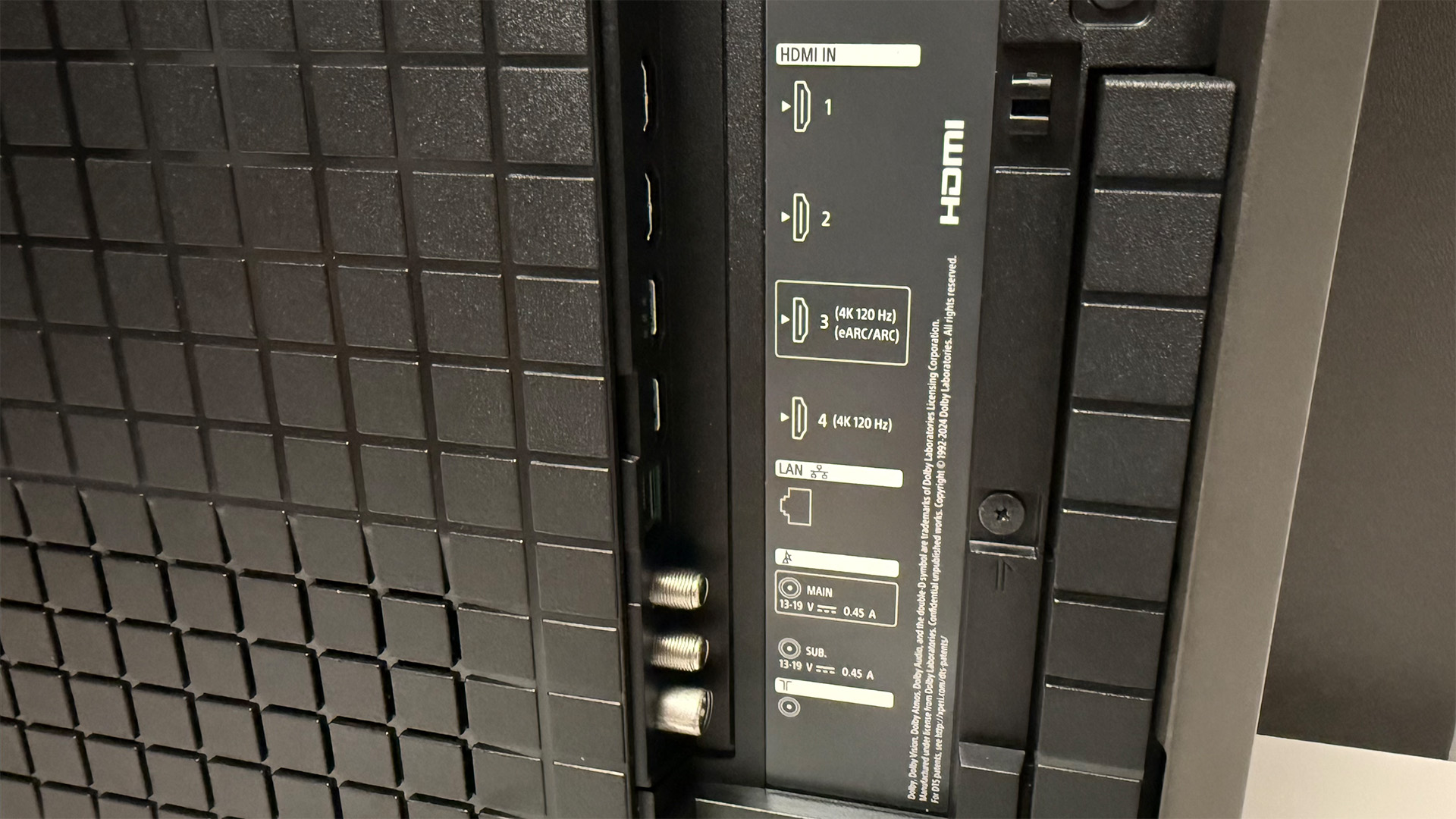
The big thing here, of course, is that the Bravia 8 II uses what Sony refers to as ‘the latest QD-OLED panel’. This, combined with Sony’s processing and custom heatsink, results in the new model apparently being able to go 25 per cent brighter than its A95L QD-OLED predecessor in terms of peak brightness, and 50 per cent brighter than the Bravia 8 W-OLED.
- Read more: W-OLED vs QD-OLED
With this increased brightness comes increased colour volume, and Sony claims to have also engineered big improvements to dark gradation (essentially very dark shading).
As you would expect, the Bravia 8 II is powered by Sony’s XR Processor which, like every rival TV processor right now, uses AI, most notably in what the brand refers to as ‘an AI scene recognition system’. This new, 2025 feature, which is exclusive to the Bravia 8 II and Bravia 5, apparently ‘detects and analyses data with flawless accuracy, then optimises the picture for ultimate realism’.
Sony has gone big in recent years on what it calls ‘Studio Calibrated Modes’. These, it says, deliver content from their respective streaming services as it was meant to be seen. So it’s no surprise to see the Netflix Adaptive Calibrated Mode, Prime Video Calibrated Mode and Sony Pictures Core Calibrated Mode all present on the Bravia 8 II.
The TV also supports Dolby Vision and Atmos, and is IMAX Enhanced certified. As with all previous Sony TVs, it does not support HDR10+, but the standard HDR10 and HLG HDR formats are, of course, on board.
Unfortunately, precious little has changed on the gaming front. Yes, the TV supports 4K/120Hz, VRR and ALLM, and it has a Dolby Vision Game mode. The ‘Perfect for PlayStation 5’ functionality remains, too, which means the TV will automatically dial in pretty accurate HDR settings when connected to a PlayStation 5.
The problem is that there are still just two full-bandwidth HDMI 2.1 sockets, and one of those doubles as the eARC port, so it will be taken up by your soundbar or other sound system, should you choose to add one. That will leave just one top-specification input for your console or gaming PC.
That’s fine if you have just one such device, but if you have more, you’re going to have to do some irritating cable swapping or accept the extras running at less than their full capabilities.
As expected, the Bravia 8 II features the Google TV platform, which is gradually gaining ground on LG’s slicker webOS.
The app selection is excellent, with no significant absentees. That includes all of the UK's catch-up services, which can be missing from some Google TV devices.
Every app delivers its content in the expected formats, too, and an initial issue we had with Netflix delivering content in 5.1 rather than Dolby Atmos has since sorted itself out.
Picture quality

For our testing, we’ve lined the Bravia 8 II up against both its A95L predecessor and Bravia 8 sibling, feeding all sets a variety of content in 4K Dolby Vision, 4K HDR10, 1080p and standard-def.
This content includes Alien: Romulus, Sinners, Spider-Man: Into the Spider-Verse, Alex Garland’s Civil War, Pan, The Fall Guys, and even an episode of Rowan Atkinson’s fairly forgotten The Thin Blue Line from 1995.
To cut to the chase, the Bravia 8 II is a significant upgrade on both models, and no flaws have been introduced. It’s all gain and no pain, and the results are glorious.
One of the Bravia 8 II’s greatest strengths is how easy it is to get looking its best. For a supremely authentic picture, simply pick Dolby Vision Dark for Dolby Vision content or Professional for everything else.
Should you want a little more pop to proceedings, either because you’re watching in a room with ambient light or simply because you enjoy an even more thrilling delivery, simply switch to Dolby Vision Bright or the Cinema mode.
We’re not saying that small tweaks won’t result in an even better picture, but the presets are so spot on, the vast majority of owners won’t deem that extra effort necessary.
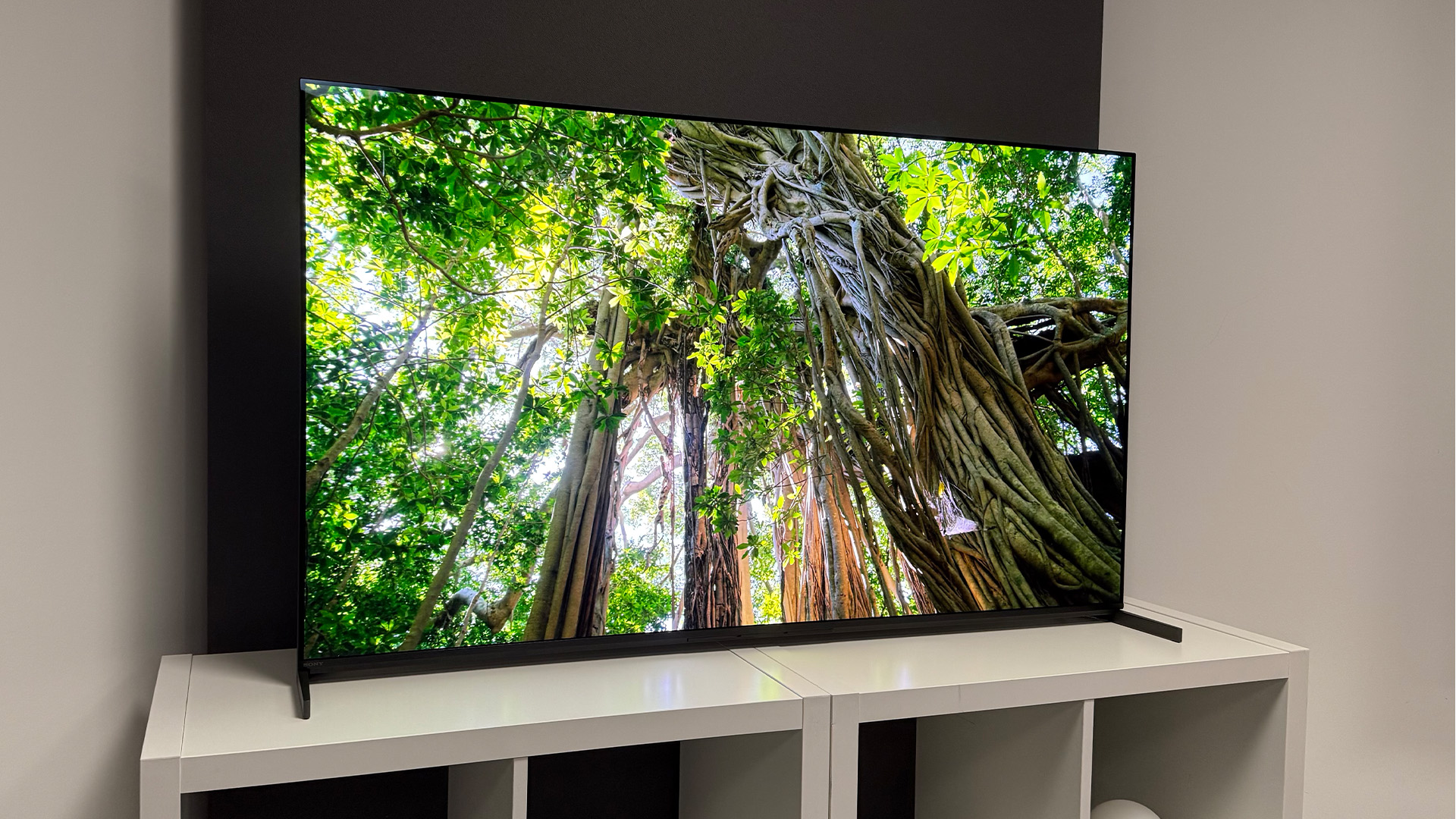
We kick things off with Alien: Romulus in Dolby Vision, and the upgrades offered by the Bravia 8 II are clear and appreciable.
The first of these is predictably the noticeably brighter peak highlights, with the pin-prick stars glistening that little bit more piercingly against the foreboding blackness of deep space.
But there’s more to it than that. The Bravia 8 II’s bright colours are more vibrant than they are from the Bravia 8 and brighter than they are from the A95L, which makes the steadily illuminating orange and red buttons in the cockpit of the recovery craft all the more impressive.
Colours maintain their natural vibrancy in low-light areas, too, such as the bunk in which Cailee Spaeny’s Rain awakens for another glorious day in the employ of the Weyland Yutani corporation.
The work that Sony has done on dark gradation has really paid off as well, in that there’s far more shadow detail from the Bravia 8 II than either of the other sets.
All of the folds and wrinkles in Andy’s (David Jonsson) grey jacket are clear as he and Rain walk through the dystopian streets of the Jackson’s Star Mining Colony, whereas the finest elements are lost on the Bravia 8 and A95L.
But what’s most impressive is how all of these elements combine with Sony’s new AI processing to make the image look so much more solid and three-dimensional. There’s volume and roundedness to objects and people (Rain and Andy as they eat breakfast in front of a daylight-style window, for example), and backgrounds have depth and purpose (the street behind Rain as she talks through a window to a cold corporate shill).
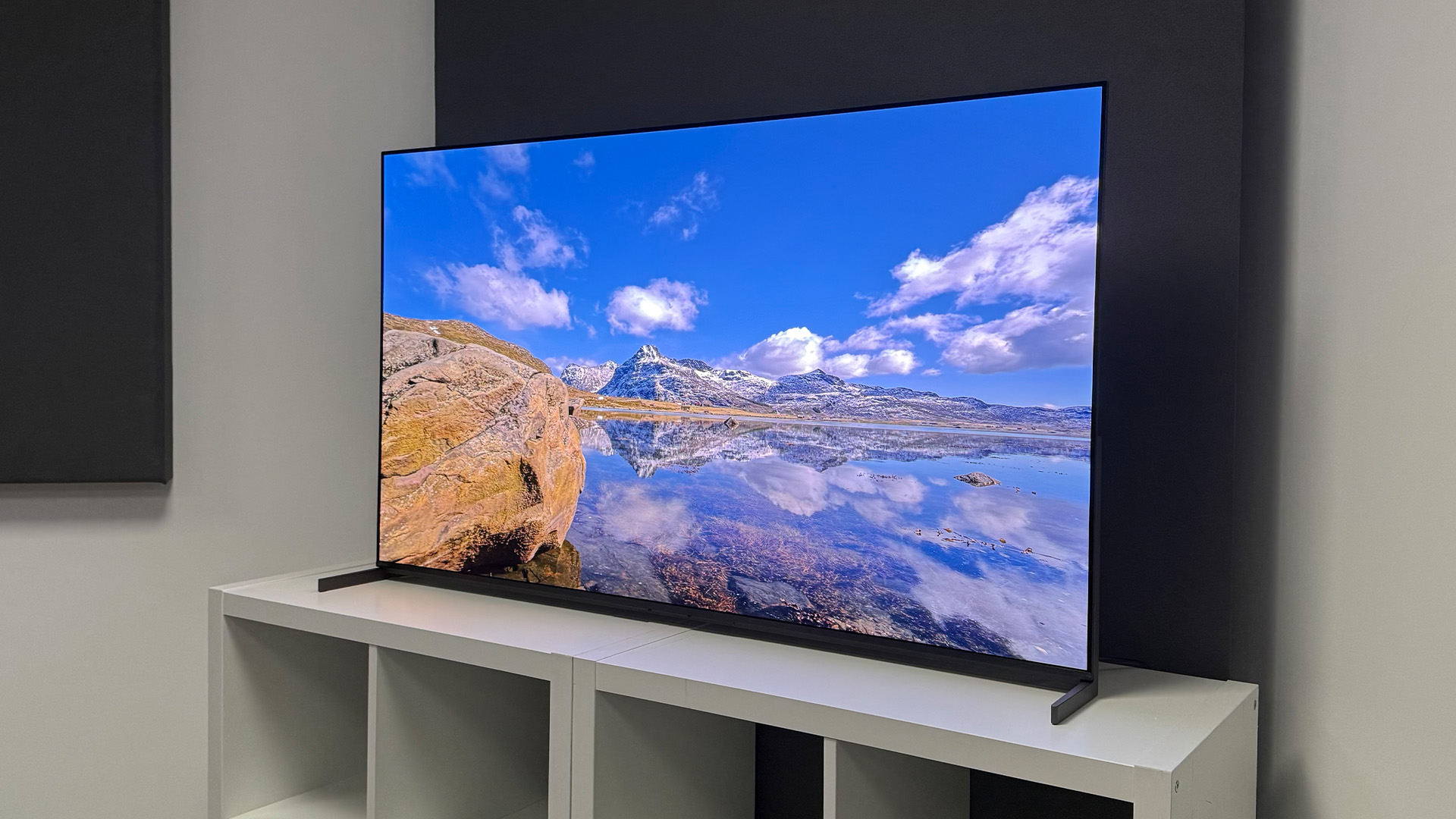
These traits hold true when we switch to Sinners. The incredible, dramatic sunrise skies over the cotton fields have greater shading, depth and contrast from the Bravia 8 II, and you get the feeling you could put your hand through the TV and reach towards the horizon.
The bleached white church really pops against the azure blue skies and verdant green fields, and as the movie takes its dark turn, the improved presentation of shadow detail ensures that you never miss a gory effect or creepy facial expression.
Punchy animated movie Into The Spider-Verse absolutely pops from the Bravia 8 II, particularly in Dolby Vision Bright. The bright sun over Brooklyn sizzles, original Spidey’s red suit is super-vivid, and the dimension-melding action at the start of the film crackles with colour.
Civil War, meanwhile, is such a crisp and vibrant movie (somewhat ironic given the gritty subject matter), and it too looks utterly glorious in HDR10 from the Bravia 8 II.
The flawless colour reproduction brings out the red of the near-sunburnt skin of Wagner Moura’s Joel as he awakens with a hangover in the bright sunlight, and while Kirsten Dunst’s Lee looks a little too pale and shadowy from the Bravia 8 and A95L respectively, the Bravia 8 II reveals the small amount of colour left in her cheeks and the full anguish on her face.
Unsurprisingly, the bright tracer fire and explosions during the battle for Washington, D.C. leap from the screen, providing stunning contrast against the dimly lit streets.
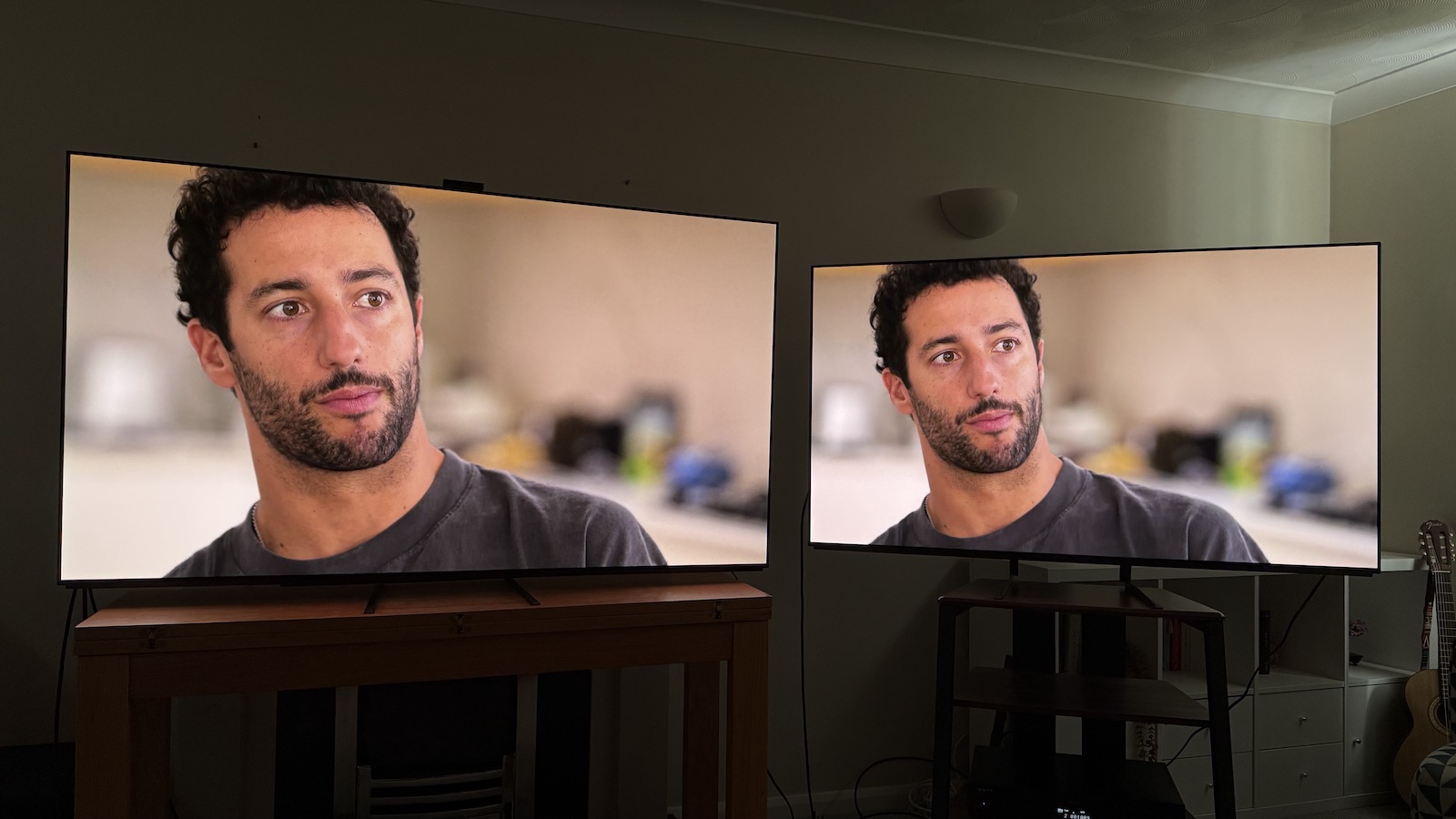
As you would probably imagine, given that it’s mastered to a super-bright 4000 nits, Pan goes even further in illustrating the advantages of the Bravia 8 II over both the Bravia 8 and A95L.
Of course, even the new model can get nowhere near the 4000 nits of the source material, but the combination of greater brightness headroom and some exceptional tone mapping results in significantly more piercing highlights with precise detail and shading.
Once again, though, it’s the way that all of the Bravia 8 II’s individually small upgrades combine to make the image seem so much more solid and lifelike that is so impressive.
Right at the other end of the quality spectrum is our standard-def stream of The Thin Blue Line, and it’s certainly true that 576p material such as this benefits less from the Bravia 8 II’s upgrades than 4K HDR does, but the quality of the upscaling is still mightily impressive.
The image created by the Bravia 8 II is undeniably cleaner and smoother than the other sets can manage, but there’s also impressive sharpness and detail. It wouldn’t be too hard to convince someone that what they were watching was HD rather than SD. We do feel the need to switch from Professional to Cinema here, though, as the former looks a little too dark.
Overall, the key to the Bravia 8 II’s success is balance. The colours are so vibrant, highlights so bright and edges so sharp, but nothing feels exaggerated or incorrect, which means you never feel as though you’re getting anything other than the very best versions of your movies and TV shows.
Sound quality

The Bravia 8 II has the same Acoustic Surface Audio+ setup as the A95L. Said setup consists of two actuators and two subwoofers (the Bravia 8 features two lesser actuators and one sub) and, in the A95L, represents one of the best built-in TV sound systems currently available.
Sure enough, the Bravia 8 II sounds just as good.
The actuators vibrate the screen itself in order to make sound. This ties the audio and video spatially in a way that rival solutions can’t match. But, as with the A95L, the Bravia 8 II manages to combine this directness with very impressive (by TV standards) spaciousness, with effects stretching far beyond the edges of the screen in all directions.
There’s excellent detail, too, and enough dynamic nuance to convey the emotion in an actor’s performance. Bigger dynamic shifts are also handled well, with chapter two of Blade Runner 2049 building steadily where rival sets sound flat.
As with the A95L, the Bravia 8 II isn’t the last word in bass depth, but it’s weightier than many rivals and, more importantly, is very controlled in the low frequencies, with only the faintest hint of fuzz creeping into the uniquely deep notes of the soundtrack.
Tonal balance is very good overall, in fact, with the impressive lower midrange ensuring that there’s warmth and fullness to voices.
In short, the Bravia 8 II sounds very similar to the A95L, which means it’s one of the best-sounding TVs you can buy. We still believe that a picture as good as this demands to be partnered by a dedicated sound system, but this is one of those rare TVs that won’t instantly be improved through the addition of a cheap soundbar.
Think along the lines of the Sonos Arc Ultra as a starting point for appropriate sound quality.
Verdict

The Sony Bravia 8 II is a truly exceptional TV. Its combination of sizzling brightness, vibrant colours through all degrees of light, terrific shadow detail and razor-like sharpness combine to produce an image with regularly astonishing dynamism, depth and realism.
In fact, it’s so good that it makes the awesome A95L look a bit flat in comparison.
We haven’t yet had the chance to run the Bravia 8 II side-by-side with the LG G5, but our previous experience with the G5 tells us that it will win for sheer brightness and spectacle, but that the Bravia 8 II should be more considered and consistent. We already know for a fact that the Sony sounds significantly better, too.
We will be doing that full comparison as part of our Awards judging process, and we’re predicting a tense battle. Until then, we can’t proclaim the Bravia 8 II to be the very best TV available right now – but it’s undeniably already one of the best.
SCORES:
- Picture 5
- Sound 5
- Features 4
MORE:
- Also consider the LG G5, Samsung S95F and Panasonic Z95B
- How about a different Sony model? Check out our Bravia 8 review and Bravia 9 review
- These are the overall best OLED TVs you can buy right now
Tom Parsons has been writing about TV, AV and hi-fi products (not to mention plenty of other 'gadgets' and even cars) for over 15 years. He began his career as What Hi-Fi?'s Staff Writer and is now the TV and AV Editor. In between, he worked as Reviews Editor and then Deputy Editor at Stuff, and over the years has had his work featured in publications such as T3, The Telegraph and Louder. He's also appeared on BBC News, BBC World Service, BBC Radio 4 and Sky Swipe. In his spare time Tom is a runner and gamer.
- Lewis EmpsonSenior Staff Writer
You must confirm your public display name before commenting
Please logout and then login again, you will then be prompted to enter your display name.

